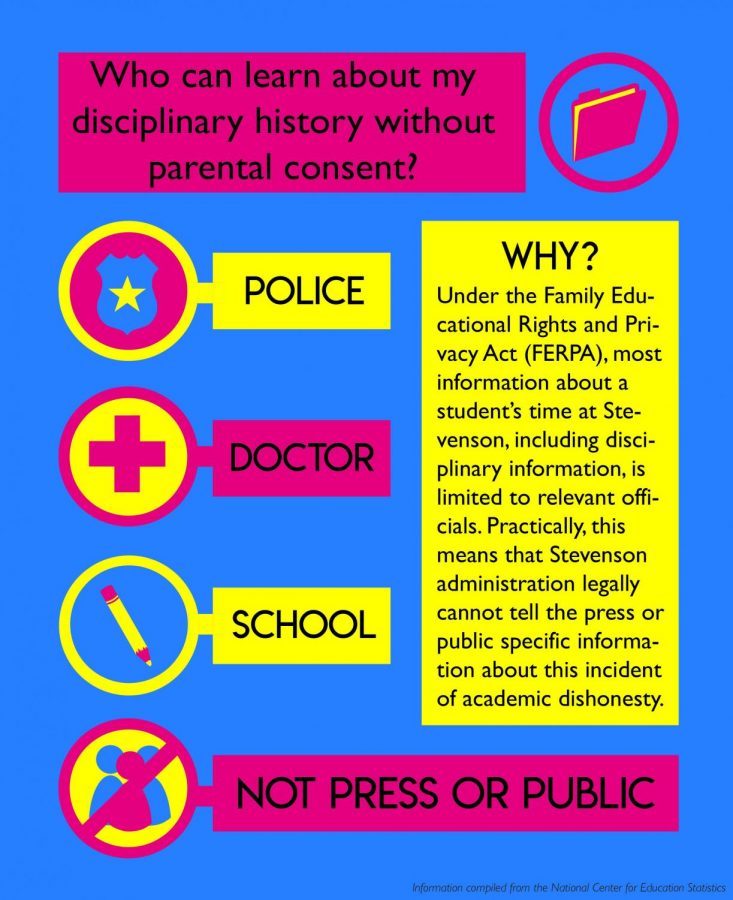Academic Dishonesty Uncovered
Stevenson students caught in organized cheating effort, consequences range from LOP, suspensions to removal from extracurriculars
A number of students were caught in an organized cheating effort on Aug. 24. Most of the students involved appear to be seniors in honors level classes.
Because many of the academically dishonest students referred to themselves as members of “Wallace University” or the “Wallaces,” it is rumored that they drew inspiration from alumni who changed their Facebook last name to “Wallace” in 2015 and 2016 after allegedly cheating themselves.
Still, although anonymous sources confirmed the existence of a “Wallace University” at least partially inspired by alumni, the less than fifteen students currently implicated in the cheating have no proven connection to academic dishonesty in years prior. A source close to the cheaters even said that “[the current students] brought cheating to the twenty-first century.”
Some anonymous students said they were able to take photos of entire tests through the use of camera pens purchased online. Others claimed to have collaborated on final exams by creating spreadsheets of questions and answers gathered from students in previous testing periods.
However, Principal Troy Gobble said that this episode is not unique in Stevenson history. In fact, on a survey conducted in Jan. 2018 by the communication arts department with over 2100 respondents, 887 students admitted to sharing specific details about a test or quiz with their peers and 425 said they used social media in a dishonest manner.
Still, this specific cheating incident sparked speculation, including rumors that students were asked to sign non-disclosure agreements (NDAs) and that over 200 seniors faced consequences. Gobble stresses that these stories are not true.
“There’s a lot of rumors about this situation, but I don’t look at it and say it’s somehow worse than other events,” Gobble said. “Cheating is cheating.”
According to Gobble, students will face punishments in adherence with the guidebook. This may include in-school suspensions, loss of privileges (LOP) and removal from “zero tolerance” organizations like National Honor Society.
Despite these consequences, many of the offending students’ peers have reacted to the situation, whether by expressing hope that the cheaters face more extreme consequences or by posting on social media to ask the Stevenson administration for an official statement on the magnitude of the situation, which would only be partially possible under current privacy laws.
Some students, including Zuzanna Kubiszewski ’19, see the incident as justice long overdue. She views cheating as a personal affront when peers with inflated GPAs are able to compete for admission into selective universities.
“It’s a slap in the face to kids who have been academically honest,” Kubiszewski said. “It doesn’t encourage a meritocracy.”
However, some question whether only the academically dishonest students are to blame. According to the aforementioned survey, 46.4% of surveyed students cheat because they feel that they do not have enough time to complete an assignment, and 14.7% because they felt that the work was too difficult.
As Gobble indicated, this is not a new issue. On the same survey, 56.2% of students reported that cheating was a prevalent issue at Stevenson, even before the news of this incident surfaced.
“Anybody could have reported [the cheaters], but no one took the initiative,” a source close to the offending students said. “You could have stopped it. Why didn’t you?”



Barrett W | Oct 7, 2018 at 6:28 pm
When I went to Stevenson, everyone cheated. By that I mean, the majority of students were not honest. Whether that was discussion, to sharing answers, to hand gestures in class. You were taught that if you weren’t great, you were meaningless, therefore you did what you had to. I think this stems from the pressure students are put under at Stevenson. While their behavior is not excusable and should be reprimanded, this “group” is not alone. This is a culture, whether people admit to it or not. There should be a deeper discussion as to why kids cheat, I would love to hear that.
John Flanell | Sep 12, 2018 at 5:48 pm
Nicely written! Thanks for bringing the light to this subject!
David Chen | Sep 12, 2018 at 9:38 pm
Many thanks to you for sharing the information. Rumors are around without facts due to privacy concerns. Don’t know what to say. Are we living in a society that it’s not cheating unless caught and it’s not a scandal unless uncovered?